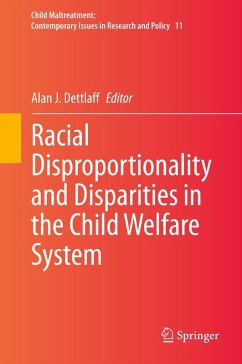This volume examines existing research documenting racial disproportionality and disparities in child welfare systems, the underlying factors that contribute to these phenomena and the harms that result at both the individual and community levels. It reviews multiple forms of interventions designed to prevent and reduce disproportionality, particularly in states and jurisdictions that have seen meaningful change. With contributions from authorities and leaders in the field, this volume serves as the authoritative volume on the complex issue of child maltreatment and child welfare. It offers a central source of information for students and practitioners who are seeking understanding on how structural and institutional racism can be addressed in public systems.
Dieser Download kann aus rechtlichen Gründen nur mit Rechnungsadresse in A, B, BG, CY, CZ, D, DK, EW, E, FIN, F, GR, HR, H, IRL, I, LT, L, LR, M, NL, PL, P, R, S, SLO, SK ausgeliefert werden.









